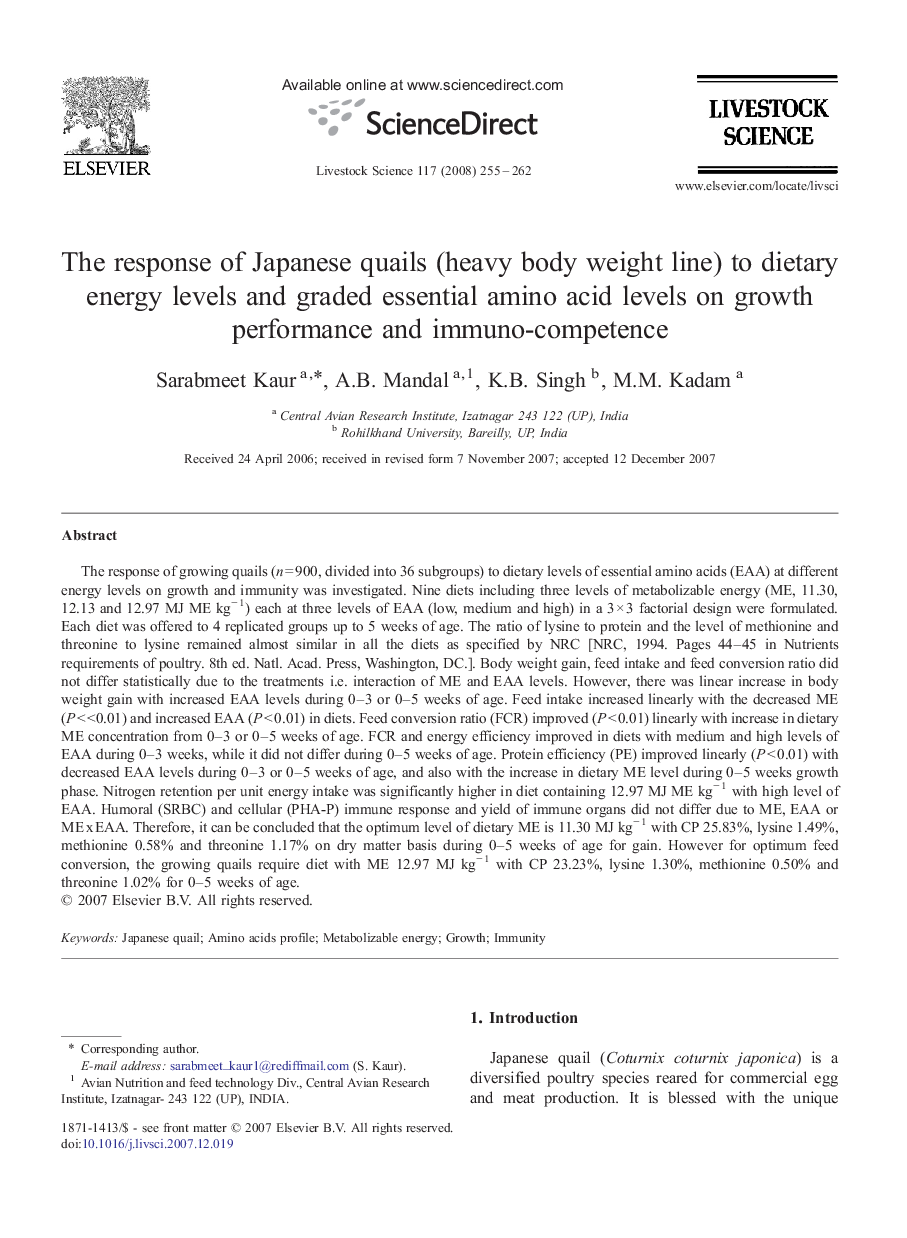| کد مقاله | کد نشریه | سال انتشار | مقاله انگلیسی | نسخه تمام متن |
|---|---|---|---|---|
| 2448363 | 1554016 | 2008 | 8 صفحه PDF | دانلود رایگان |

The response of growing quails (n = 900, divided into 36 subgroups) to dietary levels of essential amino acids (EAA) at different energy levels on growth and immunity was investigated. Nine diets including three levels of metabolizable energy (ME, 11.30, 12.13 and 12.97 MJ ME kg− 1) each at three levels of EAA (low, medium and high) in a 3 × 3 factorial design were formulated. Each diet was offered to 4 replicated groups up to 5 weeks of age. The ratio of lysine to protein and the level of methionine and threonine to lysine remained almost similar in all the diets as specified by NRC [NRC, 1994. Pages 44–45 in Nutrients requirements of poultry. 8th ed. Natl. Acad. Press, Washington, DC.]. Body weight gain, feed intake and feed conversion ratio did not differ statistically due to the treatments i.e. interaction of ME and EAA levels. However, there was linear increase in body weight gain with increased EAA levels during 0–3 or 0–5 weeks of age. Feed intake increased linearly with the decreased ME (P < <0.01) and increased EAA (P < 0.01) in diets. Feed conversion ratio (FCR) improved (P < 0.01) linearly with increase in dietary ME concentration from 0–3 or 0–5 weeks of age. FCR and energy efficiency improved in diets with medium and high levels of EAA during 0–3 weeks, while it did not differ during 0–5 weeks of age. Protein efficiency (PE) improved linearly (P < 0.01) with decreased EAA levels during 0–3 or 0–5 weeks of age, and also with the increase in dietary ME level during 0–5 weeks growth phase. Nitrogen retention per unit energy intake was significantly higher in diet containing 12.97 MJ ME kg− 1 with high level of EAA. Humoral (SRBC) and cellular (PHA-P) immune response and yield of immune organs did not differ due to ME, EAA or ME x EAA. Therefore, it can be concluded that the optimum level of dietary ME is 11.30 MJ kg− 1 with CP 25.83%, lysine 1.49%, methionine 0.58% and threonine 1.17% on dry matter basis during 0–5 weeks of age for gain. However for optimum feed conversion, the growing quails require diet with ME 12.97 MJ kg− 1 with CP 23.23%, lysine 1.30%, methionine 0.50% and threonine 1.02% for 0–5 weeks of age.
Journal: Livestock Science - Volume 117, Issues 2–3, September 2008, Pages 255–262